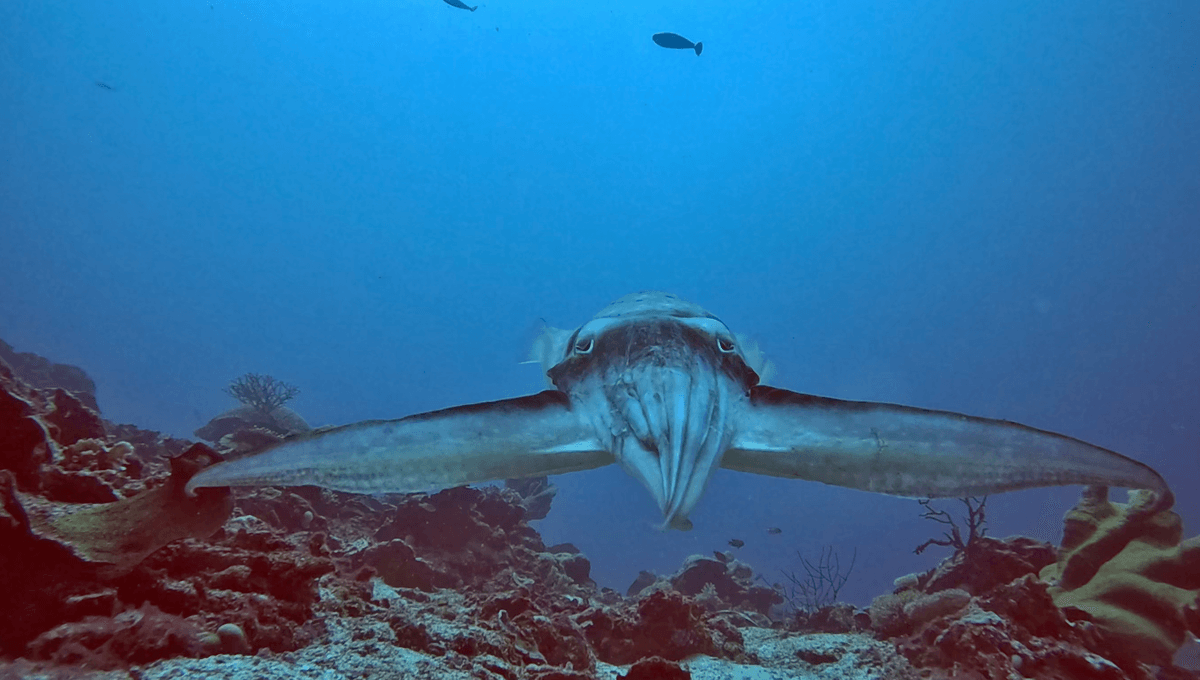
Many animals must sneak up on their prey to ensure that they can manage to catch a good meal. Whether it’s a big cat slinking through the grass or a stealthy slider, predators often go to extreme lengths to blend in and ambush their prey. Recently, researchers have looked at cuttlefish predatory movements and found they are using a unique method to hide their movements and to mesmerize their prey.
ADVERTISEMENT
Broadclub cuttlefish (Sepia latimanus) have been seen using a novel form of camouflage which involves their incredible ability to move stripes along their skin. The cuttlefish have control of cells within the skin known as chromatophores. By manipulating these cells, the cuttlefish can change color and even texture. The researchers have named this hunting technique a passing-stripe display.
“Camouflage has predominantly been studied as an adaptation that prey use to hamper their detection or recognition from predators, and almost exclusively focused on still prey as motion tends to disrupt camouflage,” said lead author Dr Matteo Santon from the University of Bristol’s School of Biological Sciences in a statement.
The team decided to look at the cuttlefish patterns from the point of view of their prey species, a crab. By doing this, they found that the crabs may become overwhelmed by the flashing nature of the cuttlefish, and thus fail to detect the predator moving towards them.
“Most cuttlefish rely on stealth to sneak up on prey. Due to their fast colour-changing skin, these remarkable animals have a wider range of options than most when it comes to camouflage while moving,” explained senior author Dr Martin How.
The team filed 28 passing stripe hunting displays from around 17 different cuttlefish. They found that the cuttlefish would typically rapidly approach from further away, before slowing down and starting the passing stripe display. They found that the moving stripes were only used during the final part of the attack.
The team also found that cuttlefish size and sex did not affect the stripe frequency, nor did the size of the crab. However, approach speed was linked to an increase in the frequency of the stripes.
ADVERTISEMENT
“It was a truly magical experience seeing this species hunting in the wild for the first time,” Santon added. “Watching this cuttlefish hunting with the passing-stripe display is like being mesmerised by the tricks of a skilled illusionist.”
The team think that they are using the passing stripe display as a counter to their own motion moving forward. The non-threatening downward movement of the stripes is a unique camouflage strategy that has not been described before in nature.
The team also took a closer look at what a crab might see and found that the moving stripe “produces a motion pattern that is very different from that expected by approaching predators”.
ADVERTISEMENT
“To our eyes this dynamic display looks very conspicuous, standing out strongly from the background, but it is exploiting the effect of the strong dynamic motion cues produced by the rhythmic passing stripes to deceive the prey,” continued Santon.
The paper is published in Science Advances.
Source Link: Become Mesmerized By A Hunting Cuttlefish Display, One Downward Stripe At A Time